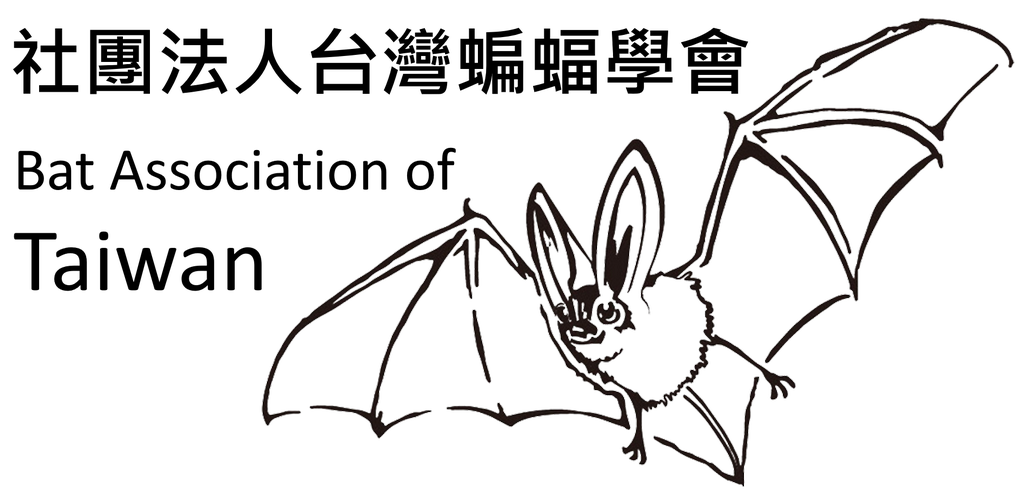蝙蝠研究
2000_臺灣葉鼻蝠的棲所選擇_何英毅
出版年份:2000
研究生:何英毅
分類:碩士論文
題目:臺灣葉鼻蝠的棲所選擇
Title:Roost Selection of Formosan Leaf-Nosed Bat
摘要:
選擇適當的棲所對蝙蝠的生存與繁殖十分重要,蝙蝠會依不同時期的需求而利用不同的棲所,甚至同種但不同性別的蝙蝠也會有不同的棲所環境需求。台灣葉鼻蝠(Hipposideros terasensis)不但在夏季與冬季時會利用不同的棲所,甚至在夏季時還會形成由雌蝠佔多數的生殖群集或以雄蝠為主的非生殖群集兩種截然不同的群集組成。
在1998年十一月至2000年四月期間,本研究共調查了32處台灣葉鼻蝠的可能棲所,其中有17處台灣葉鼻蝠的棲所與15處不曾被台灣葉鼻蝠利用的棲所。17處台灣葉鼻蝠棲所中,包括16處夏季棲所與6處渡冬棲所,其中有5處同時為夏季棲所與渡冬棲所。比較各類型棲所之間形態結構特徵、微氣候環境與受人為干擾程度等因子的差異發現:台灣葉鼻蝠傾向選擇出入口較高、棲所內總通道長較長、通道較寬較高、容積較大的地方作為夏季棲所。且棲所內的積水程度也顯著較大,出入口的朝向多為東西向,不同於未被利用的棲所以南向為主。渡冬棲所離最近水源的距離顯著小於非渡冬棲所、棲所內積水的程度也顯著較大,且出入口的朝向也以東西向居多。此外,渡冬棲所的出入口高度與通道高度皆顯著低於未曾被用來渡冬的夏季棲所。
台灣葉鼻蝠夏季棲所內的溫濕度狀況較外界環境穩定。非生殖棲所的平均溫度高於生殖棲所,但在棲所溫度的穩定性上與生殖棲所無明顯不同。冬季時,台灣葉鼻蝠渡冬棲所的均溫在各月份顯著高於其他無台灣葉鼻蝠渡冬的棲所,且台灣葉鼻蝠渡冬棲所在冬季各月份的溫差均小於其他棲所。所有記錄的可能棲所在夏季時相對溼度都處於飽和或接近飽和的狀態且變化不大;冬季時台灣葉鼻蝠渡冬棲所的相對溼度仍幾乎維持飽和,非渡冬棲所的相對溼度則較低,台灣葉鼻蝠似乎傾向在相對溼度極高的棲所渡冬。夏季時以雄蝠為主的非生殖棲所受干擾的程度亦顯著大於生殖棲所。渡冬棲所的受干擾程度則顯著小於其他非臺灣葉鼻蝠的渡冬棲所。
研究結果顯示臺灣葉鼻蝠應非隨機選擇棲所,某些棲所條件會影響臺灣葉鼻蝠對棲所的使用形態。臺灣葉鼻蝠與溫帶蝙蝠在棲所微氣候環境上的差異可能與牠們的體型、行為、生殖策略及臺灣所處的亞熱帶環境有關。
Abstract:
Appropriate roosts are important for the survival and reproduction of bats. Bats in different species, sex or seasons in a year use different kinds of roosts. Formosan leaf-nosed bats(Hipposideros terasensis) use different roosts in summer and winter. According to the sex ratio of the bat colony, the summer roosts of Formosan leaf-nosed bats can be categorized into two main groups, the breeding roosts, consisting mainly of females, and the non-breeding roosts, almost consisting of males.
Patterns of roost use exhibited by Formosan leaf-nosed bats were studied in Taiwan from November 1998 to April 2000. Structural characteristics, microclimates and disturbance levels of 17 Formosan leaf-nosed bat roosts and 15 unused roosts were compared. The summer roosts of the bats significantly have larger size (taller, longer and wider) and greater area covered by water than unused roosts. Hibernacula were significantly closer to the nearby water and likely to have a greater area covered by water. The orientation of the entrance in the summer and hibernacula were significantly different from the unused ones. Hibernacula had lower entrances and ceilings than the roosts only used in summer.
Temperatures and relative humidity in the summer roosts fluctuated less than the outside environment. Non-breeding roosts exhibited higher temperatures than breeding roosts, but temperature gradients in the two groups of summer roosts were not different. In winter, hibernacula were warmer and fluctuated less than non-hibernacula. Relative humidity in summer roosts and hibernacula was nearly 100% and higher than outside environment. Disturbance levels were significantly higher in non-breeding roosts than in breeding roosts, and in non-hibernacula than in hibernacula.
These results suggest that Formosan leaf-nosed bats are selective of their roosts, relative to other available roosts. The reasons for the difference between the microclimate selection of the temperate bats and Formosan leaf-nosed bats may be related to their body size, behavior, reproductive strategy and subtropical climate in Taiwan.
